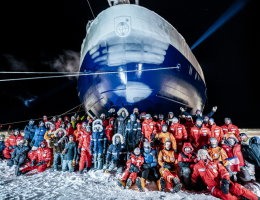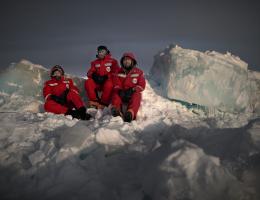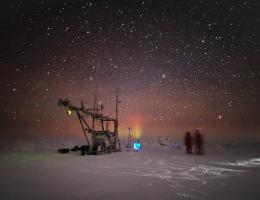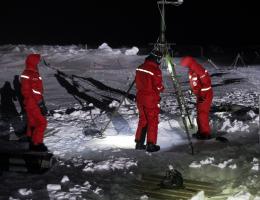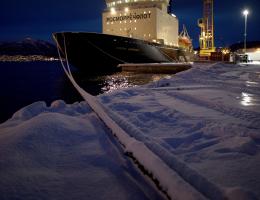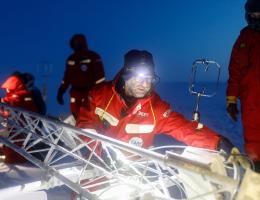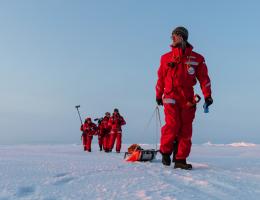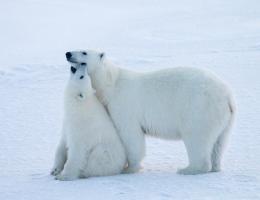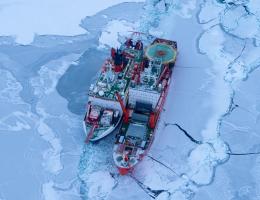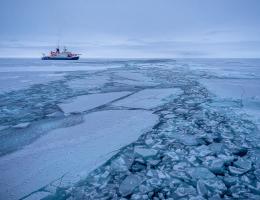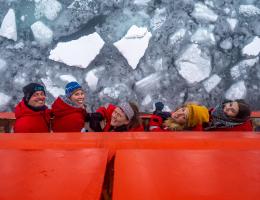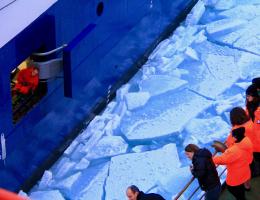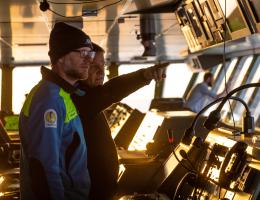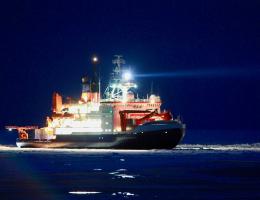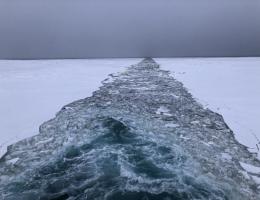MOSAiC Emphasizes Connections
The Multidisciplinary drifting Observatory for the Study of Arctic Climate (MOSAiC) is an international research expedition to study the physical, chemical, and biological processes that couple the Arctic atmosphere, sea ice, ocean, and ecosystem. Beginning in fall 2019, the RV Polarstern icebreaker was frozen into Arctic sea ice and drifted with it for a full year, allowing scientists to collect data in every season.
Onboard and out on the ice, the scientists deployed a network of instruments and measurements to capture information about how processes change across space. Coordinated activities from land-based stations, aircraft, additional ships, and satellites supported the expedition. Ultimately, measurements and analyses from this global mission is helping scientists improve models and forecasts of local, regional, and global weather and climate.
Germany’s Alfred Wegener Institute (AWI) lead the expedition, with key support from the Cooperative Institute for Research in Environmental Sciences (CIRES), a partnership of the University of Colorado Boulder and NOAA. In total, scientists and funding agencies from 20 nations have been involved; the United States represents the second largest national contribution with funding support from the National Science Foundation, Department of Energy, National Oceanic and Atmospheric Administration, and NASA.
All U.S. National Science Foundation-funded projects are listed here.
More About the Mission
- From AWI: the official MOSAiC mission webpage
- Read the: MOSAiC Science Plan
- From DOE's Atmospheric Radiation Measurement User Facility
Below is a gallery of curated images from various participants in the international mission. The Alfred Wegener Institute maintains an excellent image gallery here (note that the most current images from AWI are low-resolution, due to bandwidth limitations.)

